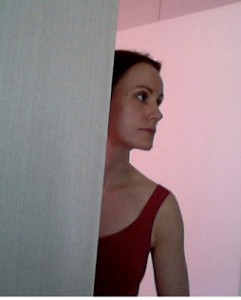Here’s our next Q&A with an adult ballet student…

1. How did you first get involved with ballet and what attracted you to it as an adult?
I saw Giselle when I was twelve years old and fell in love with ballet right there and then. But almost ten years passed before I took my first ballet class. A friend had wanted to try jazz dance, and asked me along for buddy support. A few months later my jazz teacher told me that there was a new adult beginner’s ballet class I could take. Up until then I did not even know adults could learn ballet! It was all very exciting, and still is. What I loved right away was the classical music, the structure of class, the concentration it required and the sheer beauty of ballet. There was so much to learn and to discover, about technique, steps and placement but also about the traditions of ballet, the culture and history.
2. How many classes are you currently taking per week?
Currently I take eight classes on five days of the week: five are ballet technique and three pointe classes. The amount varies from time to time, in my mid twenties I used to dance as much as 12 hours per week! These days I make sure quality comes before quantity, but three classes per week is my absolute minimum. I’m not getting any younger, and I just want to dance as much as I can!
3. What do you see as your biggest challenge as an adult ballet student?
Scheduling my classes around study and work used to be a big problem. I know this is a challenge for most adult students; how to fit work/study, family and ballet together. It’s not always possible to attend classes on a regular basis, and that can be very frustrating! But I’m very lucky, my current work schedule allows me to take as many classes as I want.
My biggest challenge right now is to be less demanding and critical of myself. I tend to focus too much on my flaws and faults, and forget how much I have already learned. The thing is, I chose ballet, but ballet did not choose me. I do not have an “ideal” dancer’s physique, and I’m not talking looks here, but anatomy. My turn-out is barely adequate and I have tight muscles and ligaments. You can’t change your skeletal structure, nor stretch your ligaments. In the beginning this did not bother me, but at my current intermediate-advanced level I’m much more aware of my limitations. I’m also not twenty-one anymore…
Some of our classes are close to professional level and our teachers are very demanding, even though they do respect our adult bodies and various capabilities. Fortunately you can do a lot with proper training and clean technique, and muscles can be strengthened and stretched even at an “mature” age. And there is so much more to ballet than technique and physical prowess! Ballet is foremost a performing art, and you do not need perfect turn-out or über-flexibility to present yourself with beautiful and expressive épaulement. Still, it is a challenge. I want to be pushed out of my comfort zone, make progress and be the best dancer I can be. But I must not be too hard on myself or even worse, forget to enjoy the ride!
4. What brings you the greatest joy as an adult ballet student?
Despite my sometime frustrations, there is so much joy that I have committed an entire blog to learning ballet as a grown-up:
http://pointetilyoudrop.blogspot.com/
In short, I always leave class happier than I came in! When I dance I just forget about everything else. I love the music, the challenge, the discipline, barre and center, adagio and allegro and everything in between. In ballet you are a work in progress, and you can always improve. I am also very lucky to have two excellent ballet teachers, Gabriella Serra and Marie-Pierre Greve (principal dancer at Royal Danish Ballet until 2008). They both teach French School, and both have strong backgrounds in Bournonville-style.
5. Do you have any advice for other adult ballet students?
Find the best teachers there are. Educate yourself about the art of ballet, its history, culture, its choreographers and dancers. Watch as much ballet as possible – easy enough with DVDs and youtube. Go to every live performance you can afford. Work on your core muscles, you need these for pretty much everything. Stretch every day. Remember to breathe. Don’t compare yourself unfavorably to other dancers. Everyone has their strong suits and weak spots and there is always someone who is more flexible, has higher extensions or bigger jumps. Instead, look at other dancers to learn and to be inspired. Finally, never give up on and always believe in your potential!




